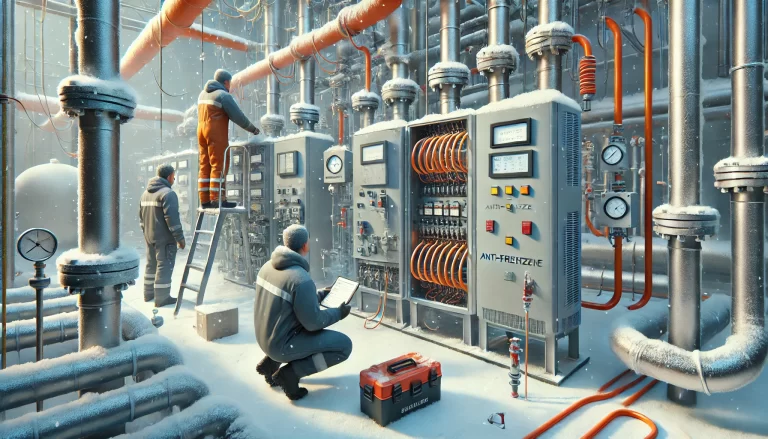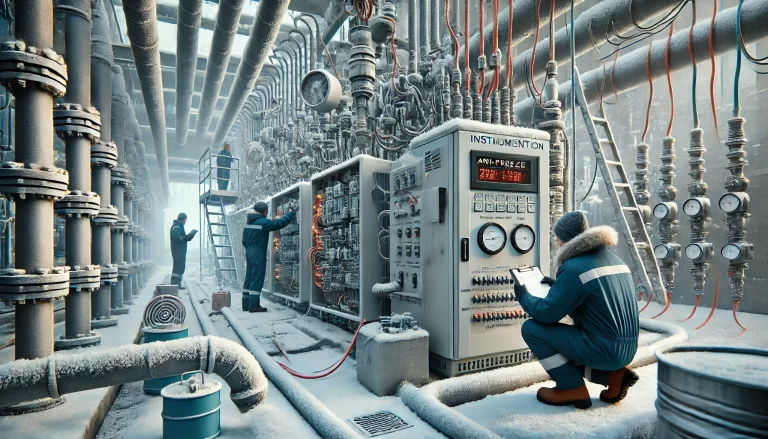I. Daily Inspection Guidelines
Inspections should combine visual, auditory, tactile, and measurement methods to ensure the system is functioning optimally.
1. Visual Inspection
Steam Supply and Condensate Drainage: Check if the pressure in the main steam line and steam headers falls within the normal range (typically 0.3~0.8MPa). Observe the condensate drain for proper discharge of steam or water.
Insulation Condition: Inspect the insulation for any signs of damage, cracking, peeling, or corrosion.
Heat Trace Connections: Ensure there are no signs of steam leakage at flanges, valves, or connection points.
Condensate Recovery System: Check the level and temperature in the condensate recovery tank, and ensure the recovery lines are unobstructed.
Steam Trap Status:
Normal: Intermittent white steam discharge.
Internal Leakage: Continuous steam discharge.
Blocked: No discharge, no drainage, and the line remains cold.
2. Auditory Inspection
Steam Trap Sounds: A normally operating steam trap should emit rhythmic “clicking” sounds or intermittent drainage noises.
Steam Flow Noise: Use a stethoscope or screwdriver to listen for the characteristic “hissing” sound, indicating unobstructed steam flow.
3. Tactile Inspection
Temperature Gradients: Starting from the steam supply, check the heat trace lines to ensure the temperature is uniform.
Key Areas: Focus on measuring points, valve groups, and transmitters that are prone to freezing.
“Dead Zones” Check: Feel the ends of heat tracing pipes or U-bends to ensure they are warm and free of condensate buildup.
4. Measurement Tools
Use of Infrared Thermometers: Regularly check the critical points of instruments and heat trace lines with an infrared thermometer.
Process Parameter Verification: Ensure that all instruments are showing normal readings.

II. Maintenance and Care Guidelines
1. Pre-Season Start-Up
System Check: Conduct a comprehensive inspection of the entire steam tracing system before starting it up.
Steam Trap Maintenance: Clean the steam trap’s filters, test its operation, and replace or clean internal components if necessary.
Condensate Drainage: Slightly open the bypass valve or low-point drain valve to expel any air, rust, or accumulated sludge.
2. During Operation
Regular Steam Trap Testing: Establish a record for regular inspections of the steam traps, checking their operation every week or bi-weekly.
Maintain Insulation Integrity: Any damage to the insulation should be promptly repaired.
Prevent External Damage: Avoid placing heavy items or performing physical work near the heat tracing lines.
3. Post-Season Shutdown
Thorough Blowing: Close the main steam valve and open all low-point drain valves. Use instrument air or nitrogen to blow out the entire system.
Isolation and Marking: Shut the valves on all branch lines and hang a “Out of Service” sign for safety.
Record and Analyze: Document any issues encountered during the season to inform maintenance plans for the next year.

III. Steam Tracing Repair Procedures
Core Principle: Always isolate, depressurize, and cool down before beginning any maintenance. Prevent burns at all costs.
Step-by-Step Guide:
1. Preparation
Work Permit: Ensure that proper work permits are issued for tasks such as hot work or general maintenance.
Technical Briefing: Ensure all team members are clear on the scope of work, location, risks, and safety measures.
Tool Preparation: Gather the necessary wrenches, pipe wrenches, new steam traps, seals, insulation materials, and personal protective equipment (PPE).
2. Safety Isolation and Depressurization
Shut the Steam Valve: Turn off the steam supply valve for the heat tracing line being repaired, and hang a “Do Not Operate, Work in Progress” warning sign.
Open Condensate Drain Valves: Slowly open all low-point condensate drain valves and steam trap bypass valves to release pressure and water.
Confirm Zero Pressure: Ensure the system is depressurized by checking pressure gauges, touching pipes, and listening for any sounds of residual steam.
Allow the System to Cool: Let the system cool down until it reaches a safe temperature for working.
3. Repair Process
Replace Steam Traps:
Remove the old steam trap, ensuring you note the installation direction.
Clean the interface threads or flange faces on both sides.
Install a new steam trap with adequate sealant or gaskets, ensuring it is tightened properly.
Fix Leak Points:
If a threaded connection is leaking, tighten the fitting.
For leaks in the heat tracing pipe itself, cut out the damaged section and connect it with a straight coupling.
Replace Heat Tracing Pipe:
Remove the old pipe, and lay down new piping, ensuring proper alignment and secure fixing.
4. Post-Repair Restoration and Testing
Close Drain Valves: After repairs are completed, close all drain and bypass valves.
Slow System Start-Up: Slowly open the isolation valve and begin warming the repaired section of the pipe.
Leak Check: Carefully inspect all connections and fittings for leaks.
System Verification: Once the system is up to temperature, check the performance of the steam traps and the instrument temperatures.
Restore Insulation: Replace the insulation to its original state once everything is confirmed to be working.

Key Safety Considerations:
Burn Prevention: Steam and condensate can reach extremely high temperatures, so ensure that insulated gloves, long-sleeve work clothes, safety helmets, and goggles are worn.
Freeze Protection: If working in low-temperature environments, provide temporary insulation for isolated instrument lines during maintenance.
Avoid Water Hammer: Gradually heat up pipes when reintroducing steam to avoid damaging the system.
Environmental Responsibility: Steam and condensate are valuable resources. Avoid unnecessary discharges and waste.
